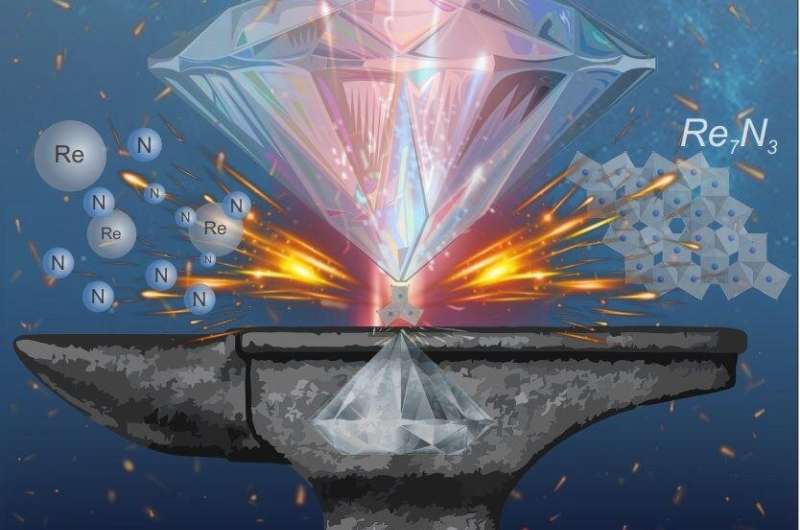
A research team from the University of Bayreuth, together with international partners, has pushed the boundaries of high-pressure and high-temperature research into Cosmic dimensions. For the first time, they have succeeded in generating and analyzing materials at the same time. The pressure at the center of the planet Uranus is three times higher than at the center of the Earth. The method for the synthesis and structural analysis of novel materials was presented in Nature.
Under extreme pressure-temperature conditions, theoretical models predict very unusual structures and properties of materials. The predictions could not be verified in the experiments. Complex technical requirements are necessary to expose material samples to such extreme pressures, but there are no sophisticated methods for simultaneous structural analyses. The experiments published in Nature open up completely new dimensions for high-pressure crystallography: materials can now be created and studied in the laboratory that exist, only under extremely high pressures in the universe.
While the experiment is still running, the method we have developed enables us for the first time to synthesise new material structures in the terapascal range and to analyze them in situ. This way, we learn about previously unknown states, properties and structures of crystals, which can help deepen our understanding of matter in general. Valuable insights can be gained for the exploration of terrestrial planets and the synthesis of functional materials used in innovative technologies, according to the first author of the publication.
The researchers show how they created and visualized novel rhenium compounds using the now discovered method. There are two compounds in question, a novel rhenium nitride and a rhenium-nitrogen alloy. The materials were created under extreme pressures in a diamond anvil cell. Full chemical and structural characterization was possible with the use of synchrotron single-crystal X-ray diffraction.
Two and a half years ago, we were very surprised in Bayreuth when we were able to produce a superhard metallic conductor based on rhenium and nitrogen. If we apply high- pressure crystallography in the future, we may discover new things. Prof. Dr. Natalia Dubrovinskaia from the Laboratory of Crystallography at the University of Bayreuth is the lead author of the study.
More information: Leonid Dubrovinsky, Materials synthesis at terapascal static pressures, Nature (2022). DOI: 10.1038/s41586-022-04550-2 Journal information: Nature Citation: As much pressure as Uranus' core: The first materials synthesis research and study in the terapascal range (2022, May 11) retrieved 11 May 2022 from https://phys.org/news/2022-05-pressure-uranus-core-materials-synthesis.html This document is subject to copyright. Apart from any fair dealing for the purpose of private study or research, no part may be reproduced without the written permission. The content is provided for information purposes only.